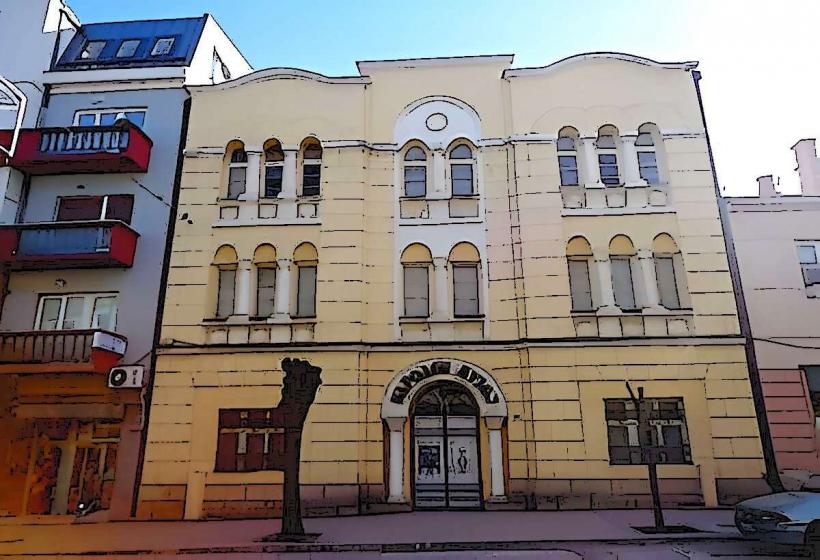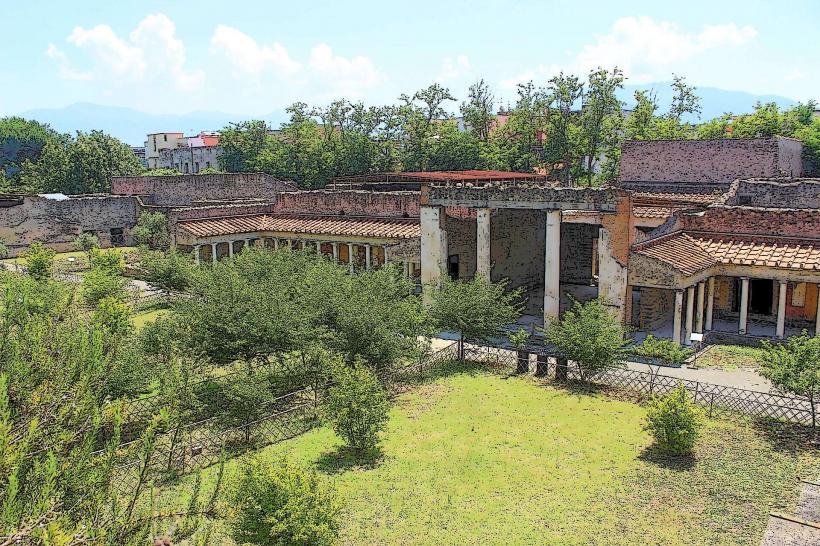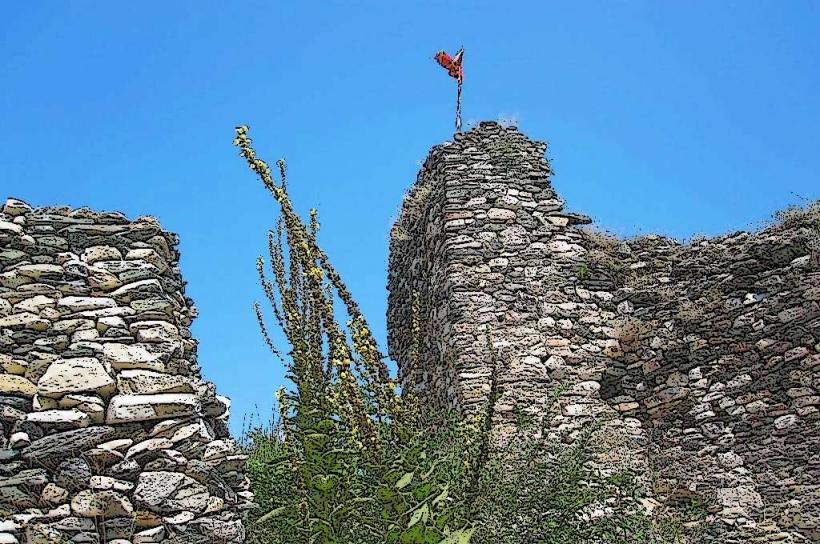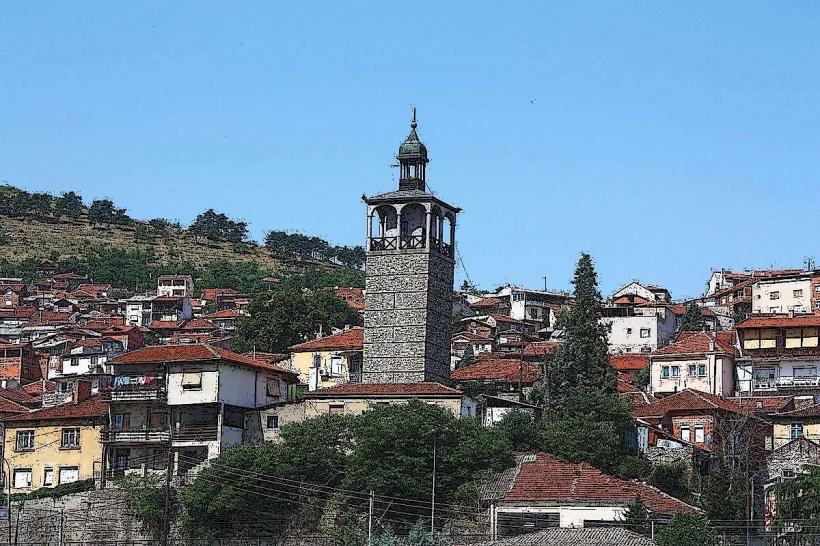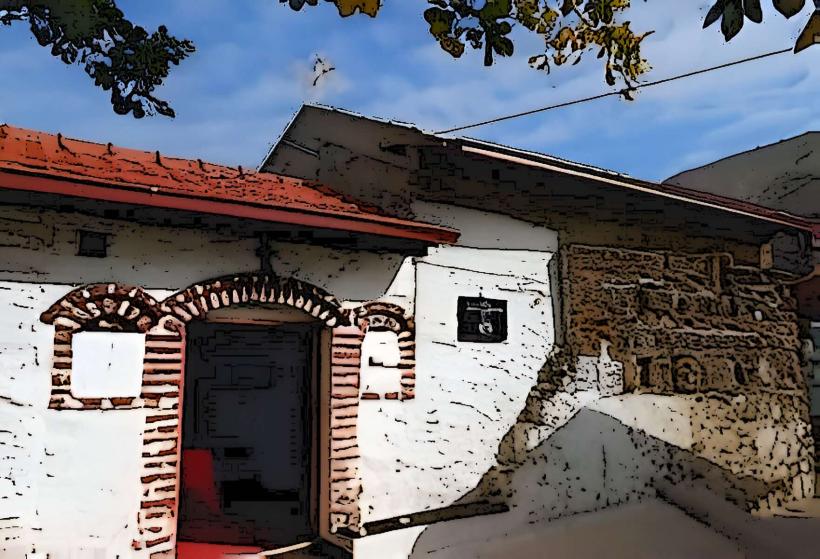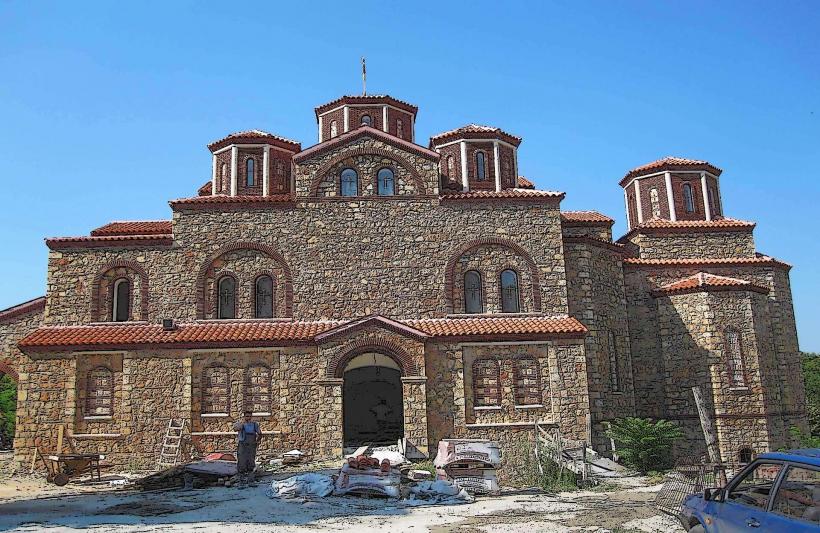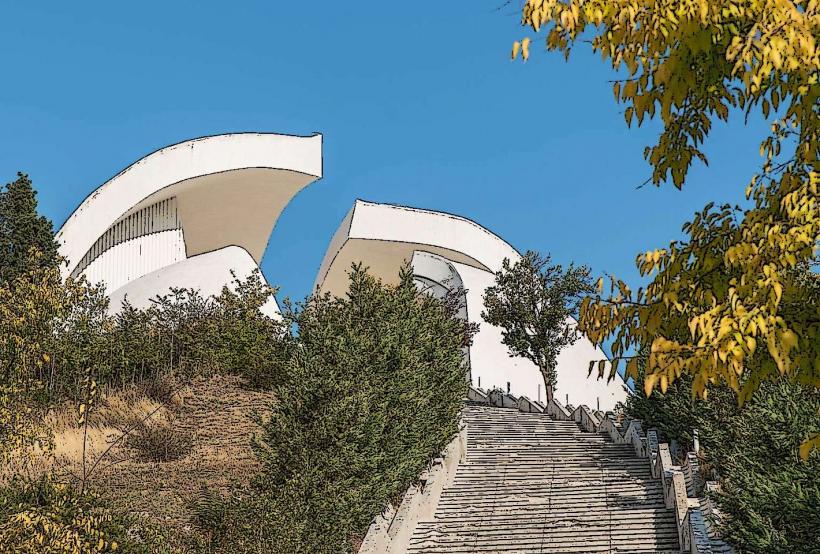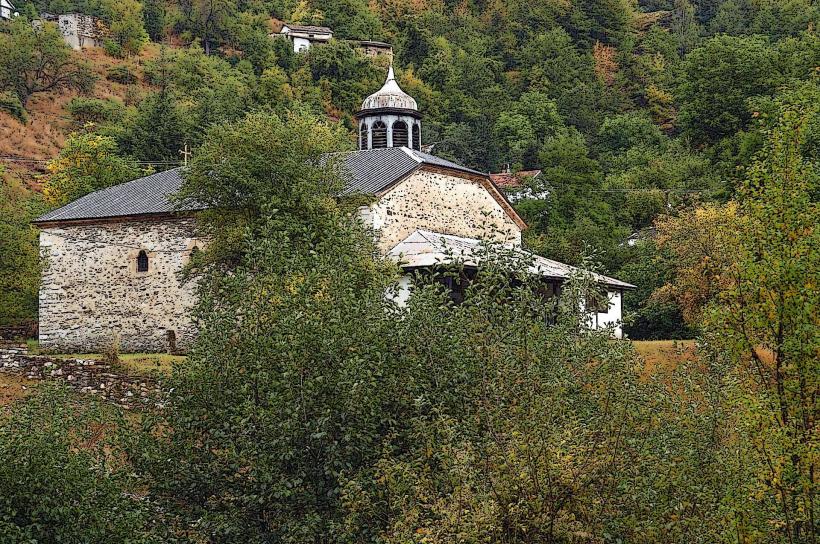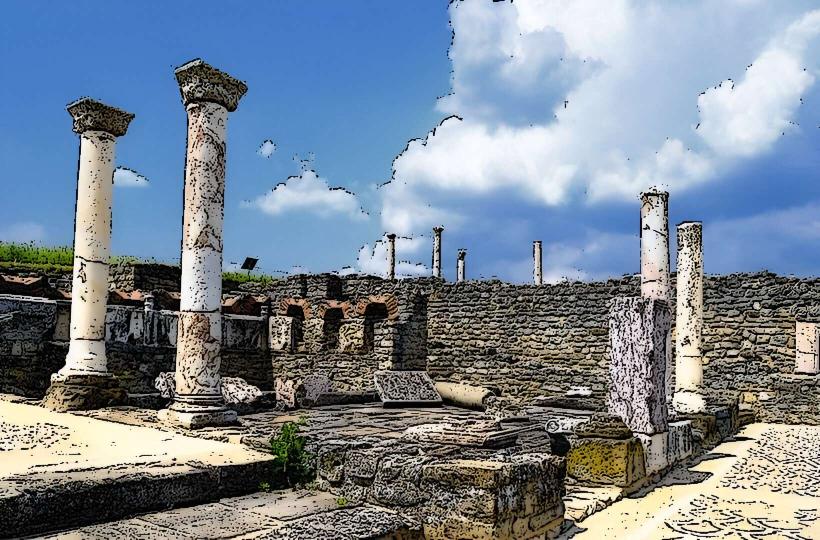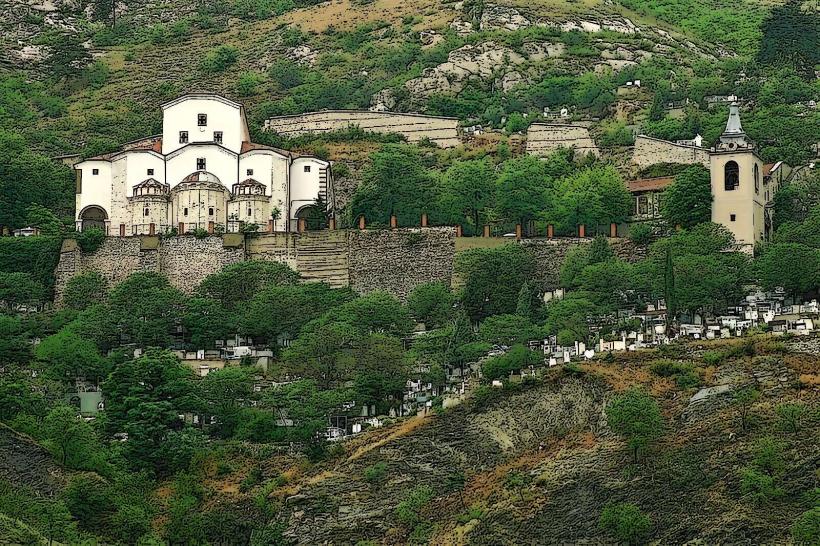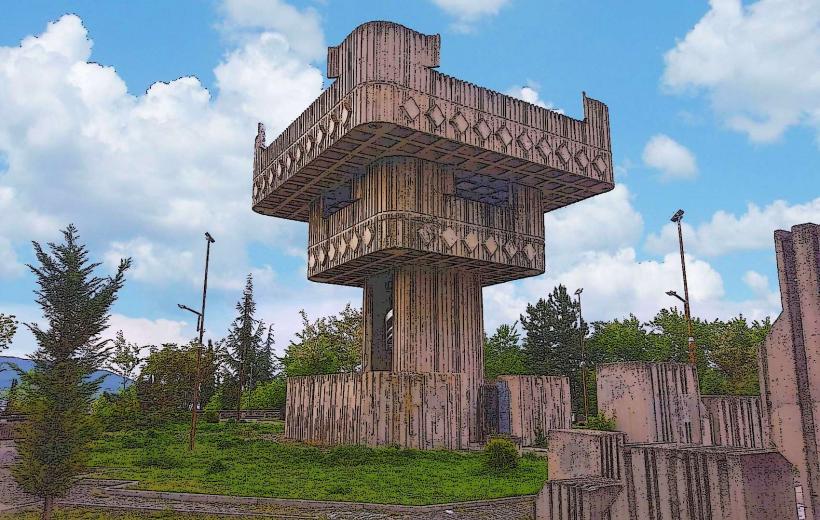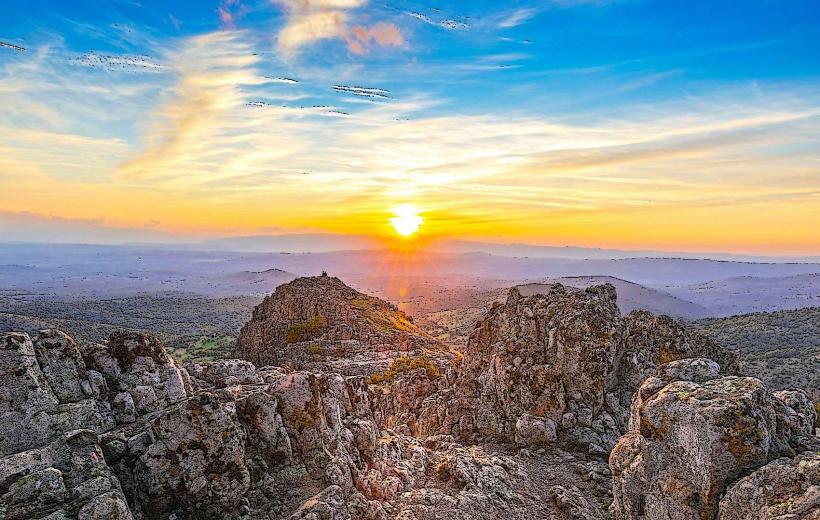Information
City: VelesCountry: North Macedonia
Continent: Europe
Veles is a city located in central North Macedonia, situated along the Vardar River. It is one of the country's key urban centers, known for its historical significance, industrial heritage, and geographical position as a transport hub connecting the north and south of the country. Below is a detailed overview of Veles, excluding its specific landmarks:
Geography and Climate
Veles lies in a valley at the foot of the Cair and Boshkov Most mountains. The city is strategically located along the Vardar River, which has played a crucial role in its development over centuries.
Climate: Veles experiences a continental climate with distinct seasons. Summers are typically hot and dry, with temperatures often reaching 30°C (86°F), while winters can be cold, with temperatures falling below freezing. Snowfall is common in winter, and the city often experiences cloudy and rainy periods during the spring and autumn months.
Topography: The city is located at an elevation of approximately 200 meters (656 feet) above sea level, with surrounding hills providing a scenic backdrop. The Vardar River runs through the city, serving as a key geographical feature and contributing to the region's agricultural productivity.
History
Veles has a long and complex history, dating back to antiquity, with evidence of human settlement in the area since the Bronze Age. The city has been influenced by various cultures and civilizations over the centuries, including the Roman Empire, the Byzantine Empire, and the Ottoman Empire.
Ancient and Medieval Periods: The area around Veles has been inhabited since ancient times, with archaeological findings indicating that it was part of the Roman province of Moesia. The settlement flourished under the Byzantines and later the Ottomans, with Veles becoming an important administrative and commercial center in the region.
Ottoman Era: During the Ottoman period, Veles became a significant town in the Skopje Pashalik (Ottoman administrative district). The city grew in both population and importance as a trade and craft center, with a variety of industries, including textile production and pottery, playing a key role in the local economy.
Modern History: After the fall of the Ottoman Empire, Veles was incorporated into the Kingdom of Yugoslavia. Following North Macedonia's independence in 1991, Veles continued to develop, particularly in terms of its industrial base. Today, the city serves as an important center for industry and commerce in North Macedonia.
Economy
Veles has a diverse economy, with a strong industrial base, agricultural sector, and growing services industry. The city's historical development as an industrial center continues to shape its economy today.
Industry: Veles is one of North Macedonia's major industrial cities, with key sectors including textiles, food processing, chemical production, and metallurgy. The city's factories, particularly those producing textiles, machinery, and food products, have been a driving force in the local economy for many decades. Veles is also home to a number of small and medium-sized enterprises (SMEs), particularly in manufacturing and production.
Agriculture: The fertile valley surrounding Veles is ideal for agriculture, with the region producing a wide variety of crops, including grains, fruits, vegetables, and tobacco. The Vardar River also provides water for irrigation, supporting the region's agricultural productivity.
Services: The services sector in Veles has been growing, with increasing attention to retail, banking, education, and tourism. The city's position along major transport routes and its proximity to Skopje and Thessaloniki (Greece) enhance its role as a service hub for both locals and visitors.
Culture
Veles has a rich cultural heritage, with a blend of influences from its long history, including its time under the Roman, Byzantine, and Ottoman Empires. The city is also known for its vibrant traditions in music, art, and local festivals.
Folk Music and Dance: Like many cities in North Macedonia, Veles has a strong tradition of Macedonian folk music and dance. Folk music is a central element of local culture, with traditional instruments such as the gajda (bagpipe), tambura (stringed instrument), and kaval (flute) being commonly played. Veles hosts various festivals and events that celebrate traditional music and dance, which are integral parts of the local identity.
Art and Literature: Veles has a rich artistic heritage, with many local painters, sculptors, and writers contributing to the city's cultural life. The city has several galleries and spaces dedicated to the visual arts. Veles also has a strong literary tradition, with poets and writers from the city playing a role in Macedonian literature.
Festivals and Events: Veles is known for celebrating traditional Macedonian holidays such as Midsummer Day (Ivanjdan) and Saint George’s Day (Đurđevdan), which are marked with festivals, parades, and traditional dances. The Veles Carnival, held annually, is a significant cultural event that attracts visitors from all over the country.
Education
Veles has a well-developed educational system, offering a range of opportunities from primary school through higher education.
Primary and Secondary Education: Veles has a number of primary and secondary schools that offer a variety of programs, including general education, vocational training, and specialized programs in fields like engineering, agriculture, and the arts.
Higher Education: While Veles does not have a university of its own, there are several institutions that offer higher education and vocational training. Many students from Veles attend universities in Skopje or other cities in North Macedonia. There are also programs offered in the fields of business, agriculture, and engineering at local colleges and schools.
Cultural and Educational Exchange: Veles participates in various cultural and educational exchange programs with cities in neighboring countries, including Greece and Bulgaria. These exchanges provide students with opportunities to learn about regional history, culture, and languages.
Religion
Veles is predominantly Eastern Orthodox Christian, with the Macedonian Orthodox Church playing a central role in the religious life of the city. There is also a small Muslim community in the city, primarily consisting of ethnic Albanians and others, contributing to the religious diversity of Veles.
Orthodox Christianity: The city has several Orthodox Christian churches, many of which are historical landmarks. Saint Panteleimon and Saint George are among the most prominent saints celebrated by the local population. Religious holidays like Easter and Christmas are widely observed, and Orthodox Christianity plays an important part in the city’s identity and culture.
Islam: The Muslim population in Veles is relatively small, and there are a few mosques in the city. The Muslim community in Veles is primarily composed of ethnic Albanians, and they celebrate Islamic holidays such as Eid al-Fitr and Eid al-Adha.
Religious Tolerance: Veles is known for its religious tolerance, with different communities coexisting peacefully and participating in each other’s religious and cultural celebrations.
Tourism and Recreation
While Veles is primarily an industrial city, it has potential for tourism due to its historical heritage, natural surroundings, and cultural offerings.
Natural Attractions: Veles is located in a beautiful valley surrounded by mountains, making it a great base for outdoor activities such as hiking, birdwatching, and cycling. The nearby Cair Mountain offers panoramic views of the city and surrounding landscapes.
Cultural and Historical Tourism: Although Veles is more industrial than other cities in North Macedonia, it is home to several historical sites, including old Ottoman-era buildings and churches. The city's industrial heritage, including its role in textile production, has also drawn interest from industrial tourism enthusiasts.
Recreational Facilities: The city has several parks, sports facilities, and recreational areas, offering opportunities for locals and visitors to engage in leisure activities. The Vardar River also provides recreational opportunities, with possibilities for fishing, boating, and riverside walks.
Challenges and Future Outlook
Veles faces several challenges as it continues to grow and modernize, particularly in terms of economic diversification, environmental sustainability, and infrastructure development.
Economic Diversification: While Veles has a strong industrial base, there is a need for the city to diversify its economy and reduce its reliance on heavy industries. Efforts to develop the services, tourism, and high-tech sectors are seen as critical for the city's long-term prosperity.
Urbanization and Infrastructure: Veles is undergoing significant urbanization, with rapid growth in population and infrastructure. Investments in transportation, healthcare, and public services are necessary to ensure the city's continued development and improvement in the quality of life for its residents.
Environmental Sustainability: The city’s industrial activities have contributed to environmental concerns, particularly regarding air and water pollution. Striking a balance between industrial growth and environmental protection is crucial for Veles’s future.
Conclusion
Veles is a city with a rich history and diverse economy, rooted in its industrial past but increasingly looking towards a more diversified future. Its central location in North Macedonia, combined with its cultural heritage, industrial capacity, and natural beauty, positions it as a key player in the country’s economic and cultural landscape. With continued investment in infrastructure and diversification, Veles has the potential to grow into a more modern and sustainable city in the years ahead.

